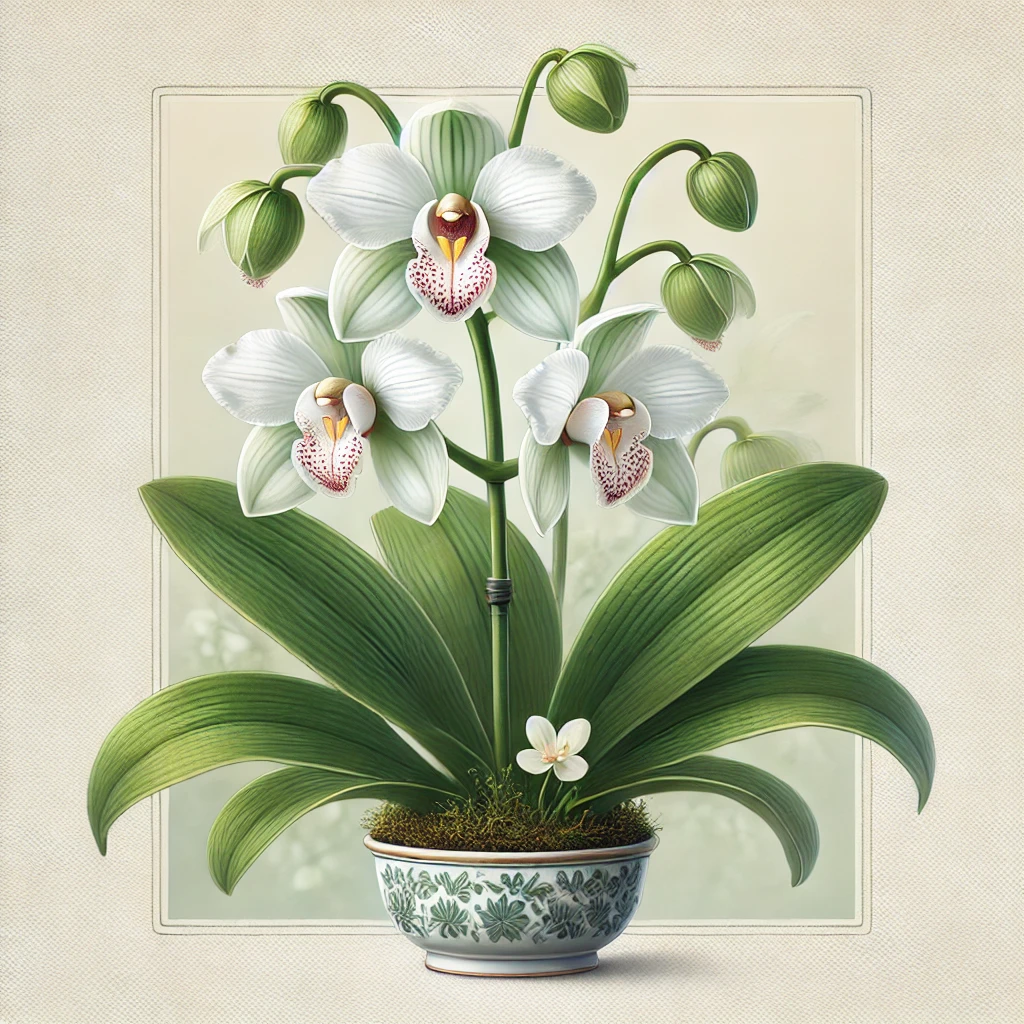Angraecum Didieri is a fascinating orchid species native to Madagascar, known for its elegant white flowers and delightful fragrance. This orchid belongs to the Angraecum genus, which is closely related to the famous Angraecum sesquipedale, also known as Darwin’s orchid. Unlike some high-maintenance orchids, Angraecum Didieri is relatively easy to grow when provided with the right conditions. Understanding its natural habitat and mimicking those conditions will ensure healthy growth and consistent blooming.
Light is a crucial factor in the care of Angraecum Didieri. This orchid prefers bright, indirect light, making an east-facing window or a spot with filtered sunlight ideal. If grown under artificial lighting, full-spectrum LED grow lights can provide the necessary intensity without generating excessive heat. Avoid exposing the plant to direct midday sun, as this can scorch the leaves. However, insufficient light can lead to weak growth and a lack of flowering. A healthy Angraecum Didieri should have medium-green leaves, indicating it is receiving the right amount of light.
Temperature and humidity play essential roles in the well-being of Angraecum Didieri. This orchid thrives in intermediate to warm conditions, with daytime temperatures ranging from 70°F to 85°F (21°C to 29°C) and nighttime temperatures slightly cooler, around 60°F (16°C). In regions with dry air, maintaining humidity levels between 50% and 70% will support healthy root and leaf development. Using a humidity tray, room humidifier, or grouping plants together can help achieve the desired moisture levels. Air circulation is equally important to prevent fungal and bacterial infections, so placing a small fan nearby can be beneficial.
Proper watering is essential for keeping Angraecum Didieri healthy. This orchid prefers a consistent watering schedule, allowing the potting medium to dry slightly between waterings. Watering once a week is typically sufficient, but frequency may need adjustment depending on climate and season. During warmer months, the plant may require more frequent watering, while in cooler months, it will need less. Always use room-temperature, non-chlorinated water to avoid stressing the plant. Angraecum Didieri does not tolerate prolonged drought or soggy conditions, so maintaining a balance is key.
Choosing the right potting medium is crucial for optimal growth. Angraecum Didieri is an epiphytic orchid, meaning it naturally grows attached to trees in the wild. A well-draining mix of medium-grade bark, sphagnum moss, and perlite is ideal. Some growers prefer mounting this orchid on cork or driftwood to replicate its natural growth habit. If mounted, more frequent watering or misting is necessary to prevent excessive drying. Repotting should be done every two years or when the medium starts to break down, ensuring proper root aeration and drainage.
Fertilization provides Angraecum Didieri with the nutrients needed for steady growth and flowering. A balanced orchid fertilizer (20-20-20) diluted to half strength should be applied every two weeks during the active growing season. Reducing fertilization to once a month in winter prevents nutrient buildup when the plant is not actively growing. To encourage blooming, a fertilizer with higher phosphorus content can be used in the months leading up to the flowering period.
Flowering in Angraecum Didieri is one of its most remarkable features. The plant typically produces fragrant white flowers with a long nectar spur, an adaptation for pollination by moths in its native habitat. Blooming usually occurs once a year, often in late spring or early summer. Ensuring proper light levels, stable temperatures, and regular feeding increases the chances of a successful bloom. The flowers can last for several weeks, filling the room with a sweet, jasmine-like fragrance.
Common issues with Angraecum Didieri include leaf yellowing, root rot, and pest infestations. Yellowing leaves can indicate too much direct sunlight or inconsistent watering. Root rot is often caused by overwatering or using a potting medium that retains too much moisture. If rot occurs, trimming affected roots and repotting in fresh medium can save the plant. Pests such as spider mites and scale insects can sometimes appear, but regular inspection and treatment with insecticidal soap or neem oil will keep infestations under control.
Caring for Angraecum Didieri is a rewarding experience for any orchid enthusiast. By providing bright, indirect light, maintaining appropriate humidity and temperature, using a well-draining potting medium, and following a consistent watering and feeding routine, this orchid will thrive and reward its grower with stunning, fragrant blooms. With patience and proper care, Angraecum Didieri can be a long-lasting addition to any orchid collection, bringing both beauty and a delightful scent to any indoor space.
